China strengthens infrastructure investment in Tibet
Xinhua
1612498390000
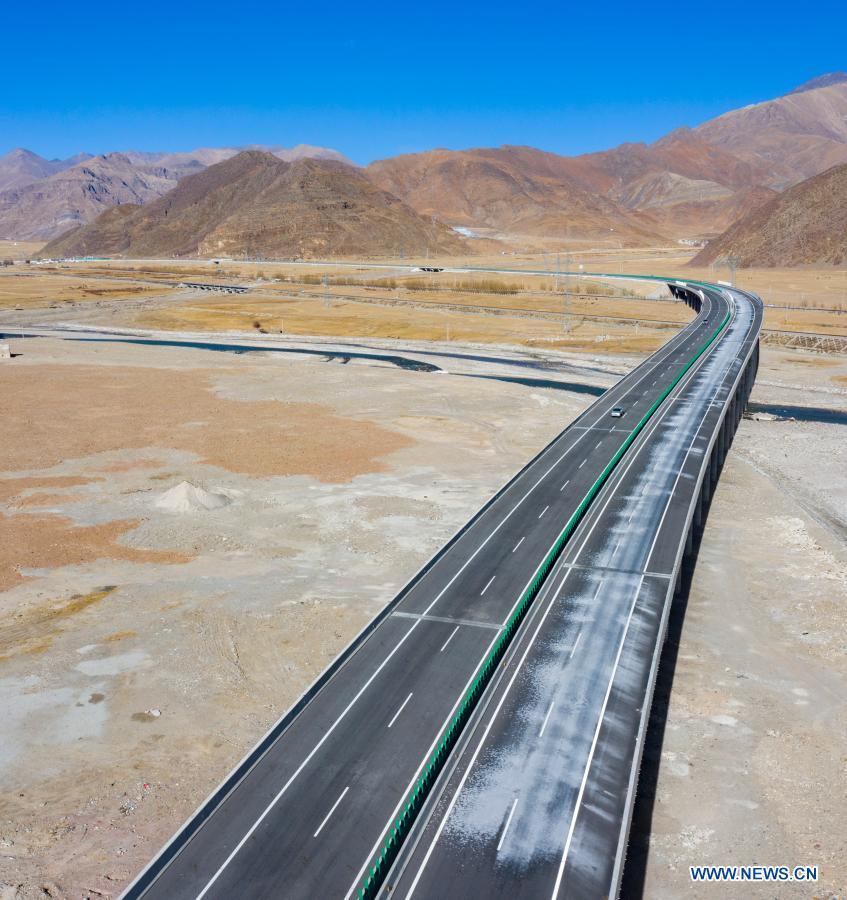
Aerial photo taken on Jan. 28, 2021 shows a section of the Lhasa-Nagqu high-grade highway in southwest China's Tibet Autonomous Region. The road network in Tibet Autonomous Region now stretches over 117,000 km, up 50 percent from the end of 2015, as the region continues to see improving connectivity. The mileage of the rail network in the region has reached 954 km, according to data released recently. Since late 2012, China has been strengthening its infrastructure investment in Tibet. So far, roads have connected 95 percent of the township-level administrations and 75 percent of the incorporated villages in the region. (Xinhua/Purbu Zhaxi)
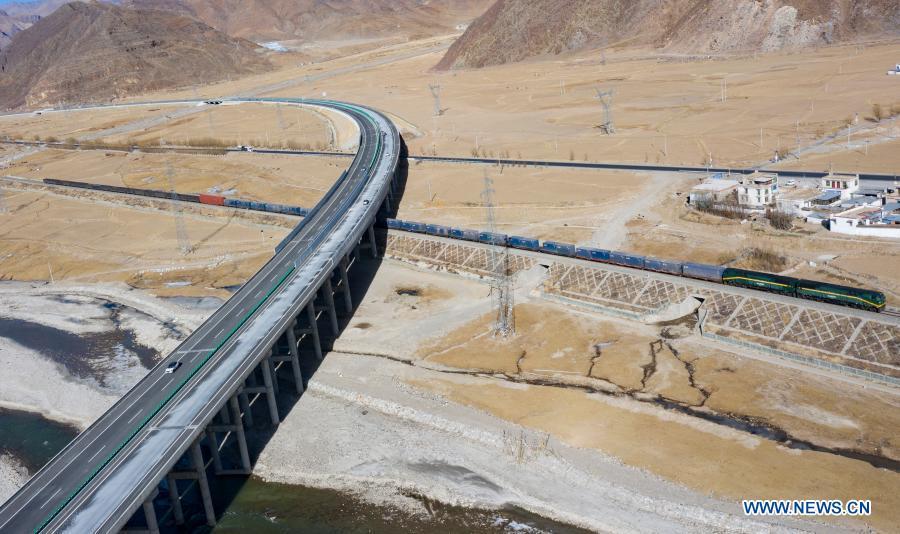
Aerial photo taken on Jan. 28, 2021 shows a section of the Lhasa-Nagqu high-grade highway and the Qinghai-Tibet railway crossing each other in southwest China's Tibet Autonomous Region. The road network in Tibet Autonomous Region now stretches over 117,000 km, up 50 percent from the end of 2015, as the region continues to see improving connectivity. The mileage of the rail network in the region has reached 954 km, according to data released recently. Since late 2012, China has been strengthening its infrastructure investment in Tibet. So far, roads have connected 95 percent of the township-level administrations and 75 percent of the incorporated villages in the region. (Xinhua/Purbu Zhaxi)
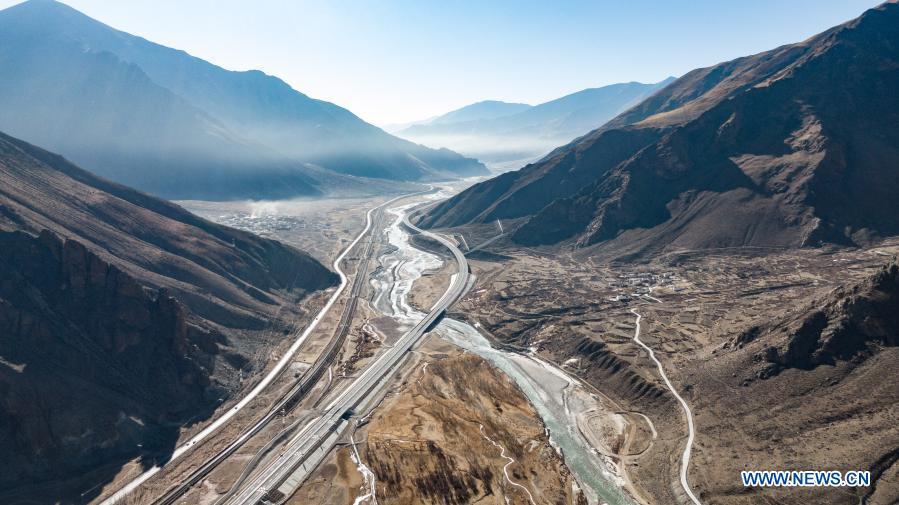
Aerial photo taken on Jan. 28, 2021 shows a section of the No.109 national highway, the Qinghai-Tibet railway, a high-grade highway and a village-level road (L to R) between Lhasa and Nagqu in southwest China's Tibet Autonomous Region. The road network in Tibet Autonomous Region now stretches over 117,000 km, up 50 percent from the end of 2015, as the region continues to see improving connectivity. The mileage of the rail network in the region has reached 954 km, according to data released recently. Since late 2012, China has been strengthening its infrastructure investment in Tibet. So far, roads have connected 95 percent of the township-level administrations and 75 percent of the incorporated villages in the region. (Xinhua/Jigme Dorje)
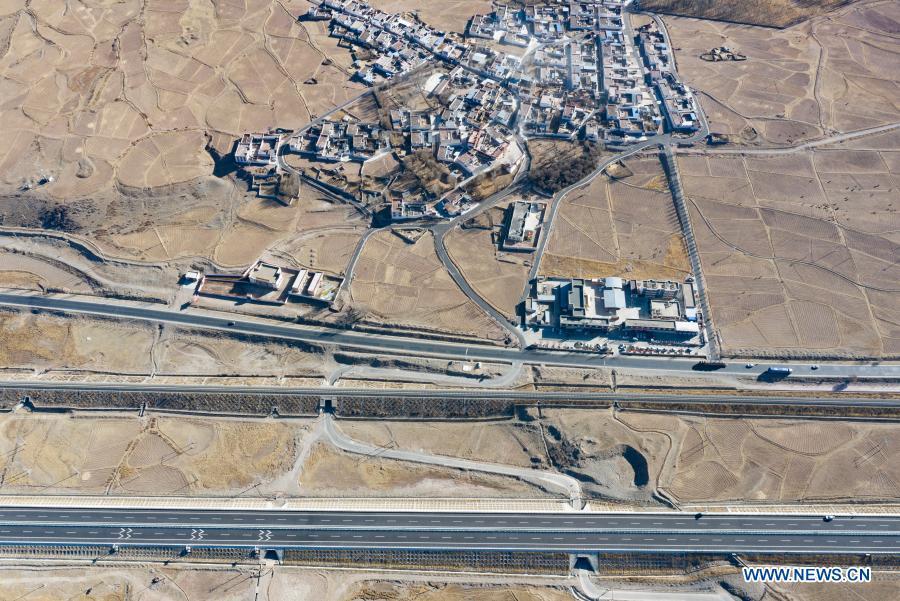
Aerial photo taken on Jan. 28, 2021 shows a section of the Lhasa-Nagqu high-grade highway (lower part) and the Qinghai-Tibet railway, along with a village in southwest China's Tibet Autonomous Region. The road network in Tibet Autonomous Region now stretches over 117,000 km, up 50 percent from the end of 2015, as the region continues to see improving connectivity. The mileage of the rail network in the region has reached 954 km, according to data released recently. Since late 2012, China has been strengthening its infrastructure investment in Tibet. So far, roads have connected 95 percent of the township-level administrations and 75 percent of the incorporated villages in the region. (Xinhua/Sun Fei)
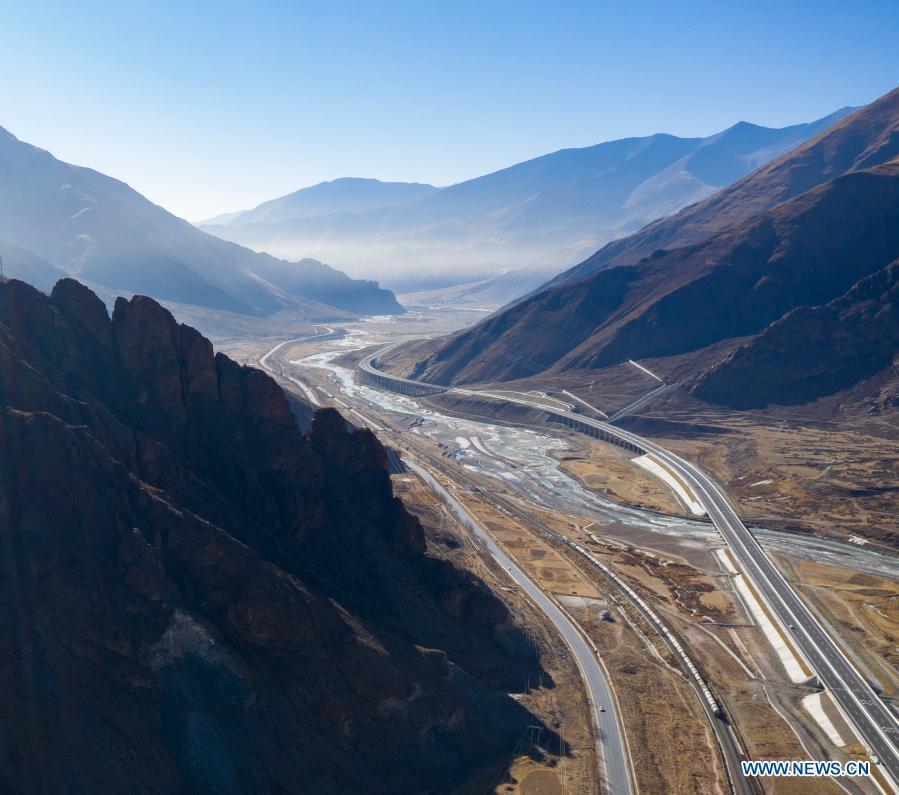
Aerial photo taken on Jan. 28, 2021 shows a section of the No.109 national highway, the Qinghai-Tibet railway, and a high-grade highway (L to R) between Lhasa and Nagqu in southwest China's Tibet Autonomous Region. The road network in Tibet Autonomous Region now stretches over 117,000 km, up 50 percent from the end of 2015, as the region continues to see improving connectivity. The mileage of the rail network in the region has reached 954 km, according to data released recently. Since late 2012, China has been strengthening its infrastructure investment in Tibet. So far, roads have connected 95 percent of the township-level administrations and 75 percent of the incorporated villages in the region. (Xinhua/Sun Fei)

Aerial photo taken on Jan. 28, 2021 shows a section of the Lhasa-Nagqu high-grade highway (R) and the Qinghai-Tibet railway in southwest China's Tibet Autonomous Region. The road network in Tibet Autonomous Region now stretches over 117,000 km, up 50 percent from the end of 2015, as the region continues to see improving connectivity. The mileage of the rail network in the region has reached 954 km, according to data released recently. Since late 2012, China has been strengthening its infrastructure investment in Tibet. So far, roads have connected 95 percent of the township-level administrations and 75 percent of the incorporated villages in the region. (Xinhua/Jigme Dorje)


